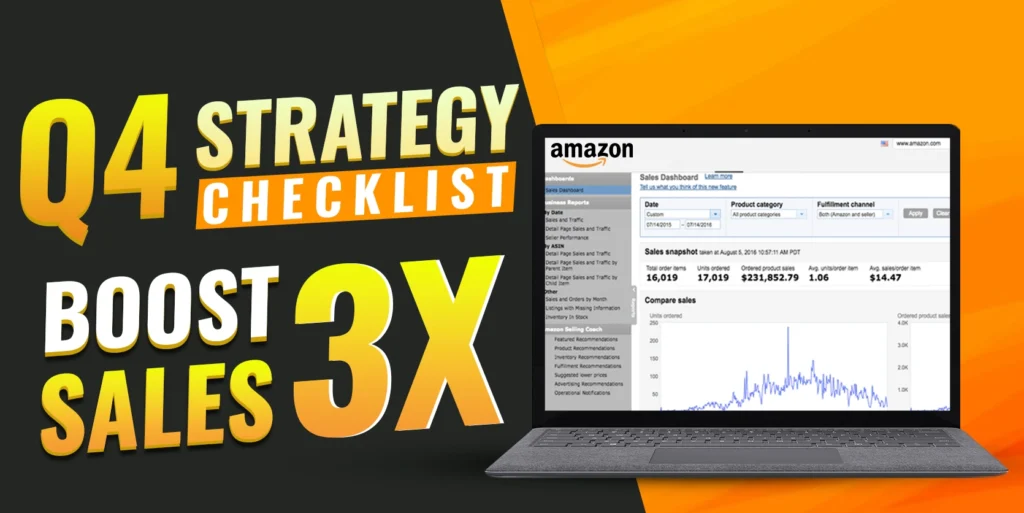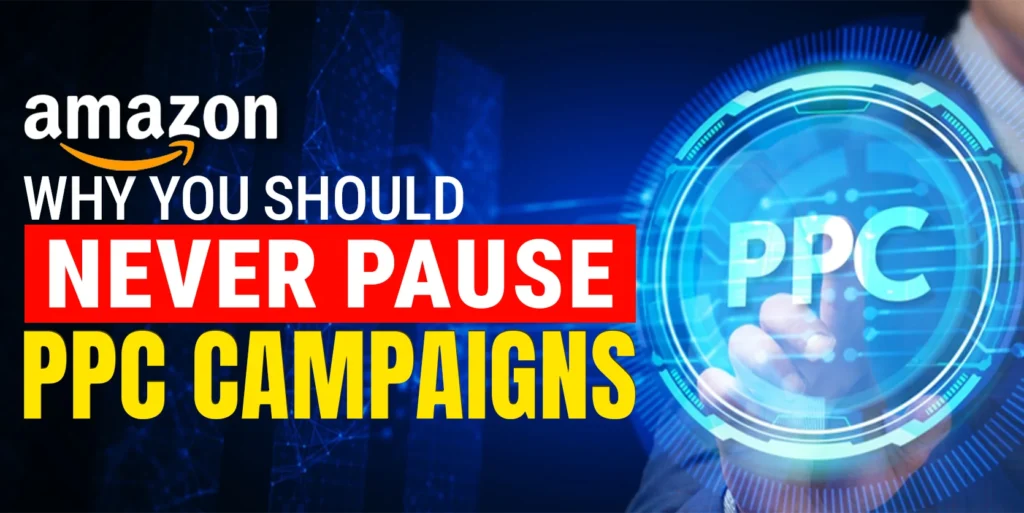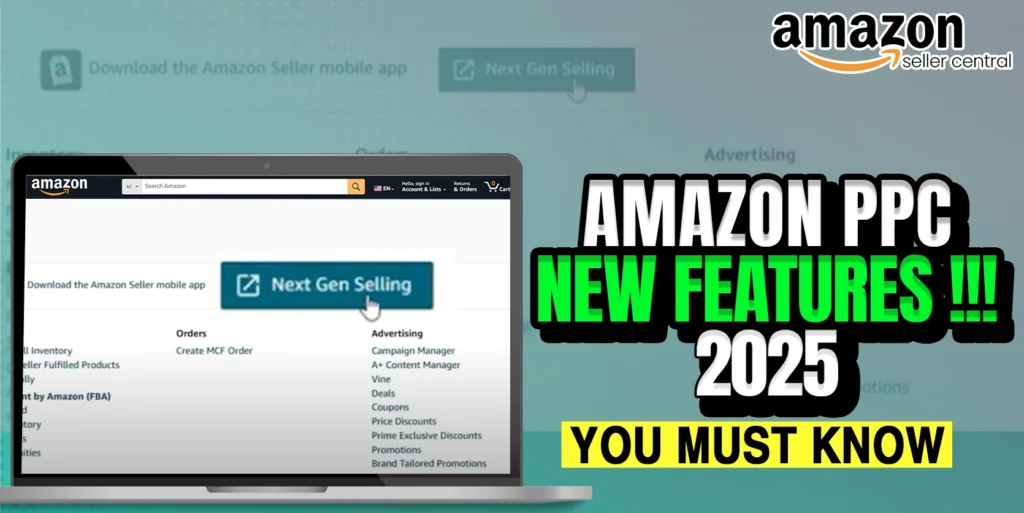As the fourth quarter (Q4) kicks into high gear, Amazon sellers are gearing up for their most lucrative months of the year. From October through December, shopping events like Black Friday, Cyber Monday, and the holiday rush offer immense opportunities for eCommerce growth. However, with the fierce competition during this period, simply listing your products won’t be enough to stand out.
In this blog post, we’ll dive into how you can supercharge your Amazon PPC campaigns to make the most of Q4. We’ll explore proven strategies and optimizations that can help you increase your sales by up to 3X, ensuring that you not only survive but thrive in the crowded marketplace. From refining your keyword targeting to adjusting your bidding strategies, this comprehensive Q4 checklist will provide you with the essential steps to dominate this critical selling season. Let’s get started!
1. Amazon Q4 Checklist: Preparing for Success
Preparation is the key to winning in Q4. Before the holiday rush kicks in, ensure you have everything in place to avoid disruptions. This comprehensive checklist will guide you through the essential steps to maximize your sales, optimize your PPC campaigns, and stay ahead of your competitors.

a. Review Seller Account Health
Ensure your Amazon seller account is in good standing. Resolve any issues like suspended listings, late shipments, or policy violations that could impact your Q4 sales. A smooth account health record is crucial during this busy period, as even small disruptions can have a significant impact on your performance.
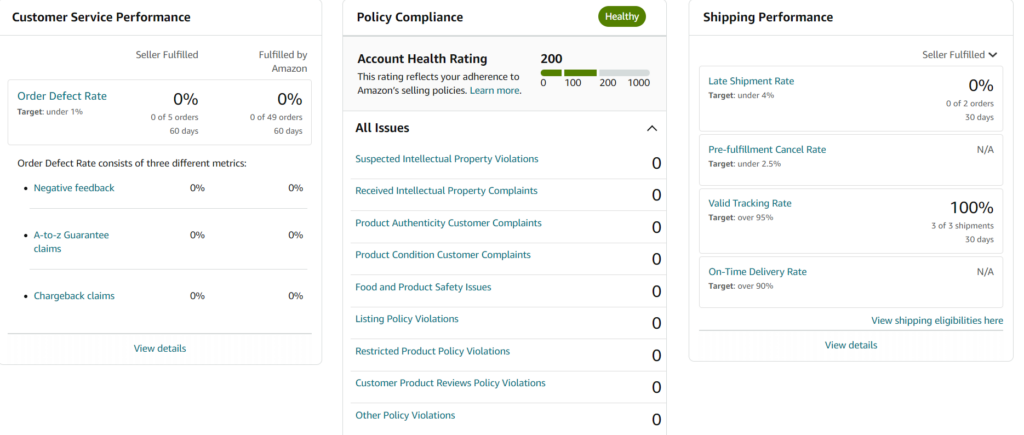
b. Keep Amazon Stock Up Early
Inventory management is critical in Q4. Restocking during this period can be slower due to increased demand and Amazon’s fulfillment center constraints. Analyze your past sales history to determine which products are likely to sell the most, and ensure you stock up early to avoid stock outs. Leverage Amazon FBA to ensure your products are Prime-eligible and ready for quick shipping.

c. Conduct Amazon Competitor Analysis
Take a close look at your competitors’ performance, particularly during Q4 from previous years. Review their product listings, ad strategies, pricing, and stock availability. Look for opportunities where you can outperform them, such as improving your product page content, offering better deals, or optimizing your ads for better visibility.
d. Review Sales History and Seasonal Trends
Analyze your sales history from previous Q4 periods to identify patterns and trends. Focus on products that have historically performed well and plan accordingly. Adjust your listings, pricing, and marketing strategies to align with consumer demand during this crucial time.
e. Optimize Product Listings and SEO
Make sure your product listings are fully optimized for search. Use relevant, high-converting keywords in your titles, bullet points, descriptions, and backend search terms. Include seasonal keywords like “holiday gift” or “Black Friday sale” to attract more traffic. High-quality images, detailed product descriptions, and bullet points that highlight key features can make a big difference in conversion rates.
f. Enhance Images and Product Detail Pages
High-quality images are essential for catching the attention of Q4 shoppers. Ensure your product images are clear, well-lit, and show the product from multiple angles. Update your A+ Content (if available) to reflect any seasonal themes and highlight special offers. Engaging, professional images and well-structured product detail pages are vital for increasing conversions during Q4.
g. Plan for Sales and Promotions
Q4 shoppers expect deals and promotions. Plan ahead for Black Friday, Cyber Monday, and holiday promotions. Consider running discounts, bundle offers, or limited-time promotions to boost your sales. You can also leverage Amazon’s Lightning Deals or Coupons to drive more visibility and conversions.

h. Monitor and Adjust Inventory Management
As sales increase during Q4, monitor your inventory levels closely to avoid running out of stock. Use Amazon’s inventory tools to track stock levels in real-time. If you’re using FBA, make sure you’re aware of shipping deadlines to ensure your products are in Amazon’s fulfillment centers on time.

i. Review Shipping and Fulfillment
Shipping speeds are crucial during Q4, especially with Amazon’s emphasis on Prime shipping. If you’re using FBA, confirm that your inventory is arriving at Amazon’s fulfillment centers ahead of time. Also, make sure your shipping templates and delivery dates are updated to meet the increased demand.
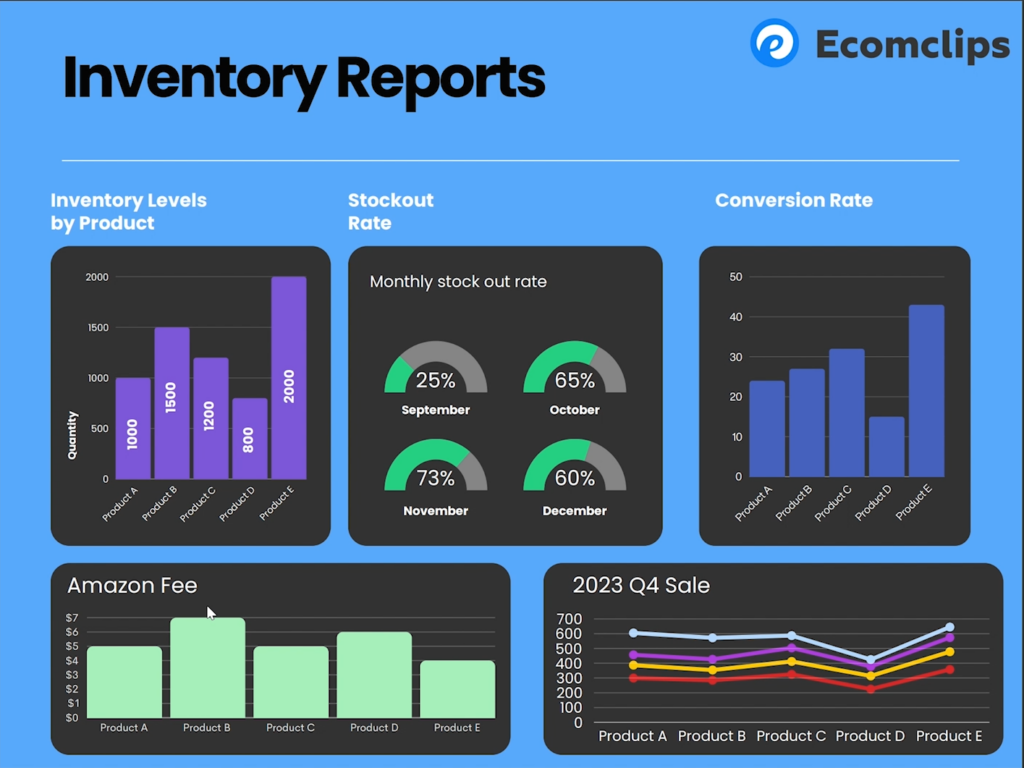
By following this comprehensive Amazon Q4 checklist, you’ll be well-prepared to make the most of the holiday season, optimize your PPC campaigns, and stay competitive in a crowded marketplace. Ensure your strategies are solid in terms of inventory management, PPC performance, and listing optimization, and watch your sales soar during this critical period.
2. Amazon Q4 Events: Key Dates To Boost Sales
Q4 is packed with high-traffic events that can drive massive sales for Amazon sellers. Mark these dates on your calendar and prepare targeted promotions to capitalize on these opportunities. Not only can you drive more visibility and sales during these key events, but optimizing your Amazon PPC campaigns for each can result in significant boosts in performance.
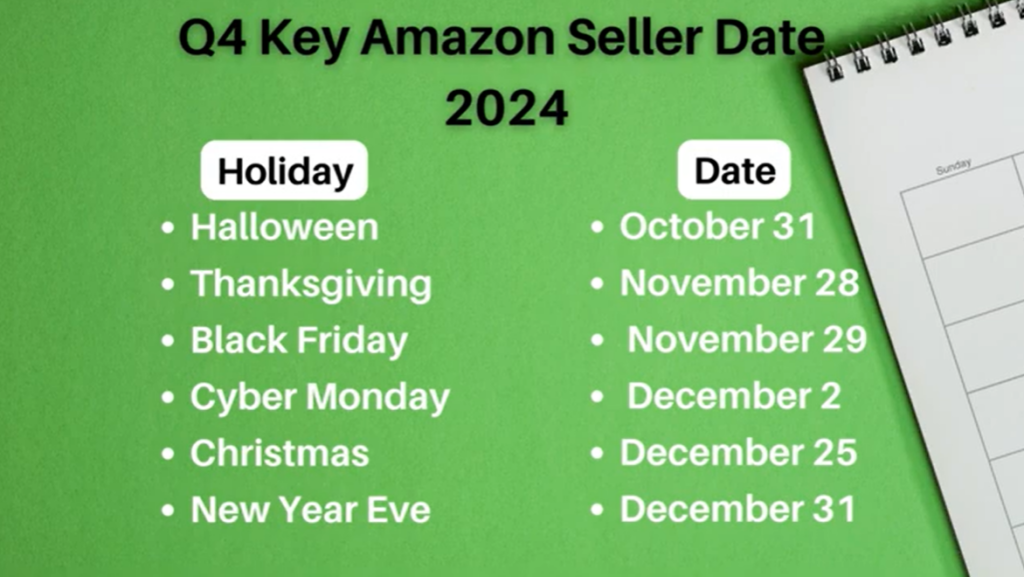
a. Prime Early Access Sale (October)
The Prime Early Access Sale, typically held in mid-October, is a relatively new event that presents an excellent opportunity for sellers to jumpstart their Q4 sales. This event is exclusive to Amazon Prime members, and many consumers expect significant discounts similar to Black Friday.
What Sellers Should Do:
- Discount Offers: Offer exclusive deals to Prime members to create urgency.
- Bundle Products: Consider bundling products for more attractive deals.
- Optimized Listings: Update product listings to include “Prime Early Access” keywords and ensure the best possible images and descriptions.
PPC Strategy:
- Increase bids on top-performing keywords, especially those targeting Prime members.
- Launch targeted Sponsored Products campaigns that highlight your deals and promotions for Prime Early Access.
- Consider running Amazon Deals or Lightning Deals during this time to gain more visibility.
b. Black Friday (November)
Black Friday is the largest shopping day of the year, with consumers expecting huge discounts and deals. The volume of traffic on Amazon is immense, and competition among sellers is fierce.
What Sellers Should Do:
- Special Discounts and Offers: Provide deep discounts on popular products to attract attention.
- Time-Sensitive Promotions: Create a sense of urgency by promoting limited-time offers.
- Target Gift Shoppers: Focus on products that are likely to be bought as gifts.
PPC Strategy:
- Increase Ad Budget: Expect higher ad costs, so increase your daily budget to remain competitive.
- Bid Adjustments: Bid higher for key keywords like “Black Friday deals” and “holiday sale”.
- Use Sponsored Brands: If applicable, create a Sponsored Brands campaign to showcase multiple products or bundles.
- A/B Test Ads: Run multiple ad variations to test what resonates best with shoppers during Black Friday.
c. Cyber Monday (November)
Cyber Monday follows Black Friday and is dedicated to online shopping. It’s known for online-exclusive deals, and Amazon customers are on the lookout for tech gadgets, fashion, and more.
What Sellers Should Do:
- Online-Only Deals: Promote Cyber Monday-exclusive offers to attract the online-only shoppers.
- Stock Up Inventory: Make sure your top-selling items are fully stocked, as many shoppers focus on last-minute deals.
- Enhance Product Pages: Use high-quality images and optimized listings for mobile shoppers.
PPC Strategy:
- Increase Bids on Tech and Gift Keywords: Adjust your campaigns to reflect what’s trending during Cyber Monday. Focus on keywords like “Cyber Monday sale” and “best tech deals”.
- Utilize Sponsored Products and Sponsored Display Ads: These ad types can help showcase specific products, while Display Ads can retarget customers who have shown interest in your items.
- Optimize for Mobile: Ensure your ad copy and product pages are mobile-friendly, as a significant portion of Cyber Monday shoppers will be browsing on mobile devices.
d. Christmas Shopping (December)
The Christmas shopping season often extends beyond Cyber Monday, as many consumers prefer to shop last-minute for holiday gifts. Shoppers are searching for deals across various categories, including electronics, fashion, home décor, and toys.
What Sellers Should Do:
- Last-Minute Deals: Focus on last-minute gift ideas and offer fast shipping options, like Amazon Prime, to cater to shoppers in a hurry.
- Target Gift Ideas: Update your listings to feature items that would make great gifts. Consider adding gift-wrapping options if applicable.
- Use Holiday-Themed Content: Adjust your product descriptions and images to include holiday messaging and festive themes.
PPC Strategy:
- Holiday Keywords: Focus on gift-oriented and holiday-themed keywords like “Christmas gifts” or “last-minute Christmas deals.”
- Retargeting Ads: Use retargeting ads to re-engage shoppers who visited your listings but didn’t convert.
- Sponsored Brands and Video Ads: Consider running a Sponsored Brand campaign with festive banners, and experiment with video ads that showcase your products as perfect holiday gifts.
e. Post-Holiday Sales (Late December)
After Christmas, there is a surge in consumers looking for post-holiday deals. This is the perfect time to target shoppers looking for clearance items, New Year’s promotions, or even products they missed during the holiday rush.
What Sellers Should Do:
- Clearance Sales: Offer discounts on slow-moving inventory and seasonal items to make space for new products.
- New Year’s Promotions: Plan promotions that tie into New Year’s resolutions, like fitness products or home organization items.
- Highlight Remaining Stock: Use “limited stock” messaging to create urgency and encourage last-minute purchases.
PPC Strategy:
- Lower Bids on Gift Keywords: As the holiday rush winds down, lower your bids on seasonal keywords that are no longer relevant.
- Focus on Long-Tail Keywords: Optimize for long-tail keywords such as “end of year sales” or “clearance sales” to capture post-holiday traffic.
- Amazon Deals: Consider running clearance deals or limited-time promotions to encourage last-minute shopping and boost sales during this slower period.
By planning ahead and adjusting your strategies according to these key Q4 events, you can significantly increase your sales, improve your PPC performance, and stand out in the crowded marketplace. Don’t forget to monitor performance closely during these peak periods and adjust your tactics as necessary to ensure maximum success.
3. Inventory Management: Avoid Stock outs
One of the worst things that can happen during Q4 is running out of stock. Not only does it result in lost sales, but it can also negatively impact your Amazon rankings and make you lose the coveted Buy Box. Effective inventory management is crucial to maximizing your Q4 success. Here’s how to manage your inventory effectively during this busy season:
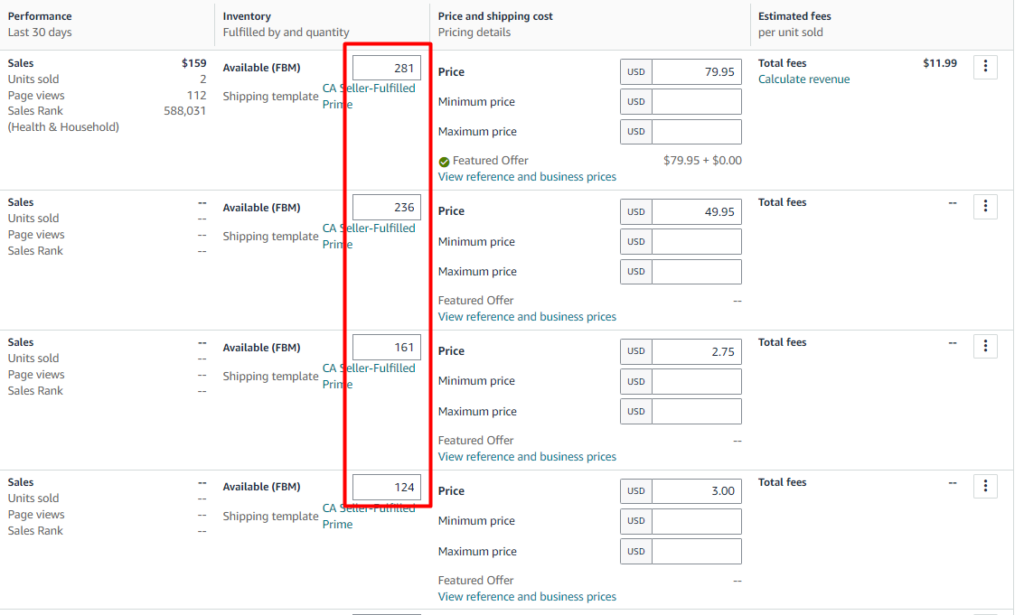
a. Forecast Demand
Accurate demand forecasting is the foundation of successful inventory management. Use historical sales data from previous Q4 periods, combined with current trends, to estimate how much inventory you’ll need for each product.
How Sellers Can Forecast Sales:
- Historical Data: Analyze sales data from the previous Q4 periods to spot patterns. Look at the impact of special events like Black Friday and Cyber Monday.
- Seasonal Trends: Use tools like Amazon’s “Business Reports” or third-party forecasting tools to predict spikes in demand during specific events.
- Market Research: Check what’s trending and how similar products have been performing. This will help you predict potential demand for new or seasonal products.
b. Overstock Rather than Understock
In Q4, the risk of stock outs is higher due to increased demand. It’s better to overstock than to understock, as running out of inventory can hurt your sales and rankings, and you may lose the Buy Box.
How Sellers Can Avoid Stock outs:
- Purchase in Bulk: If you anticipate strong sales, ordering extra inventory will prevent stockouts during peak shopping times.
- Monitor Stock Levels Regularly: Track your inventory daily to ensure you’re not getting low. Adjust your PPC and promotions accordingly when stock is limited.
- Prime Days and Flash Sales: Make sure you have sufficient inventory to meet the demand for Prime Early Access Sales, Black Friday, Cyber Monday, and Christmas promotions.
c. Leverage FBA (Fulfilled by Amazon)
FBA is one of the most efficient ways to manage inventory during Q4, ensuring that your products are available for Prime customers and leveraging Amazon’s vast network of fulfillment centers. However, FBA fulfillment times can slow down during Q4 due to the high volume of shipments, so planning ahead is key.
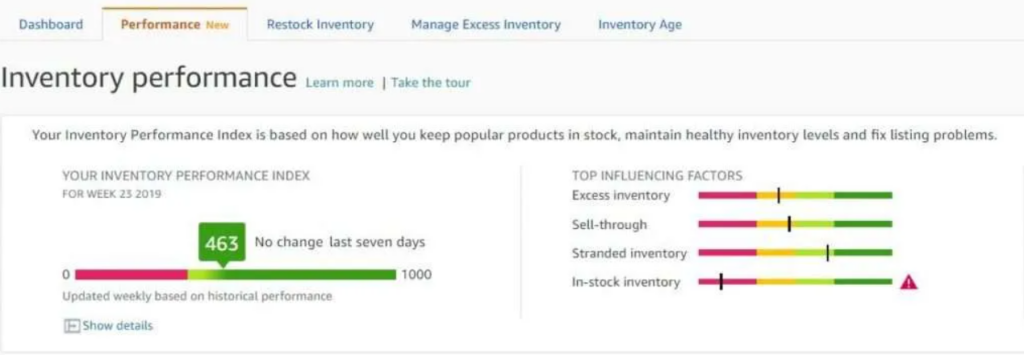
How to Optimize FBA for Q4:
- Send Inventory Early: Ship your products to Amazon’s fulfillment centers well in advance of Q4 events. Amazon’s deadline for FBA shipments can be earlier than you think, especially as the holiday season approaches.
- Ship to Multiple Fulfillment Centers: Amazon may split your inventory across different warehouses. Ensure you’re aware of where your products are being stored to avoid delays.
- Use Amazon’s Inventory Performance Index (IPI): Monitor your IPI score regularly to understand how well your inventory is moving and whether you need to make adjustments.
Avoiding FBA Fees:
- Excess Inventory: Too much inventory in FBA can result in high long-term storage fees. Avoid overstocking products that are unlikely to sell during Q4.
- Short-Term FBA Fees: Products stored in Amazon’s warehouses for over 180 days are subject to long-term storage fees. Plan ahead to move slow-moving inventory before it hits the long-term storage window.
d. Backup Fulfillment Plan (FBM)
If your FBA stock runs out, you can still fulfill orders using FBM (Fulfilled by Merchant). Having a backup plan ensures you don’t lose out on sales if you experience stock outs in FBA.
How to Set Up FBM:
- Prepare FBM Logistics: Have a warehouse or third-party fulfillment center lined up for backup. Ensure that you can quickly fulfill orders without impacting customer experience.
- Update Listings: Set up FBM as an alternative in your product listings and update your shipping times to reflect your fulfillment capabilities.
- Monitor FBA Stock: Regularly monitor FBA stock levels so you can transition to FBM if necessary.
e. Avoid Excess FBA and Storage Fees
Managing FBA inventory during Q4 involves not just keeping enough stock but also avoiding excess fees. Amazon charges storage fees based on how long your products stay in their fulfillment centers, with higher fees during the peak holiday months.

How Sellers Can Minimize Fees:
- Monitor FBA Fees: Regularly track Amazon’s FBA fees (both short-term and long-term) to adjust your inventory levels accordingly.
- Use Amazon’s “Restock Inventory” Tool: This tool provides recommendations on how much stock to send based on your sales history and expected demand, helping you avoid sending too much inventory.
- Plan Inventory for Q4 and Beyond: For items you know will have slower sales after Q4, reduce stock levels to avoid long-term storage fees. Conversely, for fast-moving items, consider sending extra inventory for the busy holiday season.
f. Q4 Strategy for Managing Amazon Stock
Managing Amazon inventory in Q4 requires careful planning and real-time adjustments. Sellers need to ensure that they not only meet the demand but also optimize for efficiency, avoiding unnecessary storage fees and stock outs.
Key Strategies:
- Balance Inventory Levels: Find the balance between having enough stock to avoid stock outs while minimizing excess inventory that could result in high storage fees.
- Dynamic Replenishment: Use real-time data to adjust inventory shipments during Q4. If your best-sellers are flying off the shelves, it’s crucial to restock them quickly.
- Monitor Sales Velocity: Keep a close eye on the velocity of sales during Q4 events. If sales are higher than expected, be ready to scale up your inventory shipments to match the demand.
By following these inventory management strategies, you can avoid stock outs, manage your FBA fees, and optimize your stock for Q4 success. Balancing your inventory levels, forecasting demand accurately, and taking proactive steps to monitor and restock when necessary are key to thriving during this high-demand period.
4. Listing Optimization: Stand Out Amid Competition
A well-optimized Amazon listing is crucial for ranking on Amazon and converting visitors into buyers, especially during the competitive Q4 season. As shoppers flock to the platform for holiday deals, your listing must stand out to capture their attention. Here’s how to get your product listings ready for Q4.
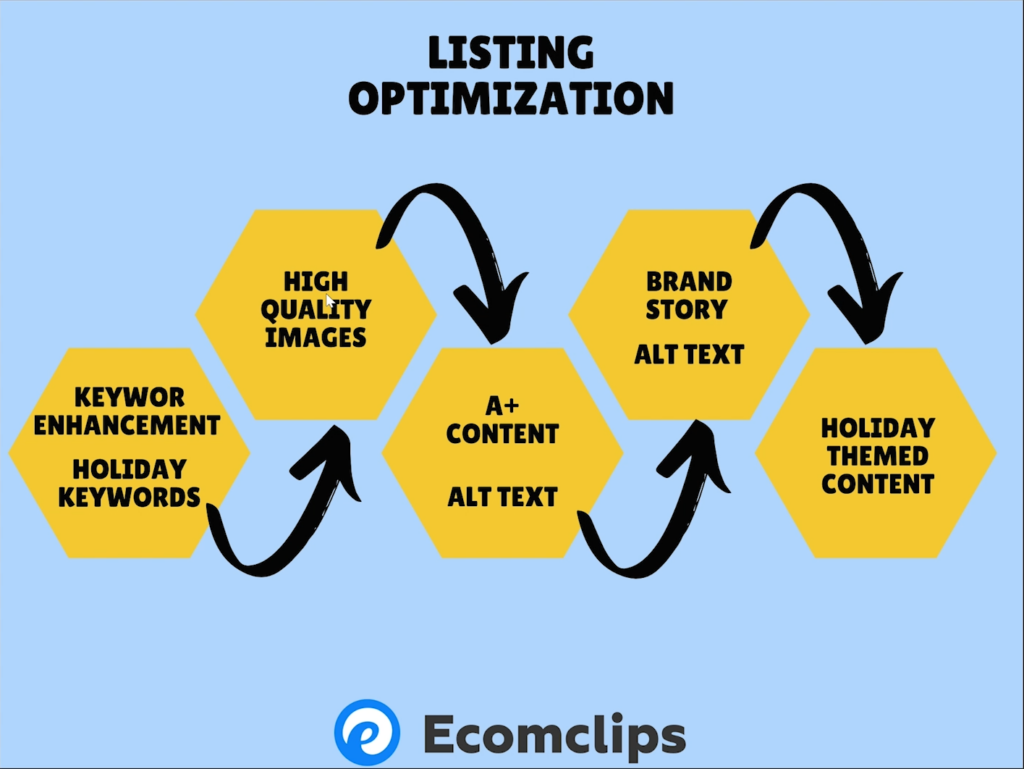
a. Keyword Research
Effective keyword research is the foundation of a strong Amazon listing. In Q4, search trends can shift dramatically as shoppers hunt for holiday deals and seasonal products. Make sure your keywords reflect this change.

How to Optimize for Keywords:
- Update Seasonal Keywords: Use tools like Helium 10, Jungle Scout, or Amazon’s own search bar to identify trending keywords. For example, include holiday-specific terms like “gift,” “stocking stuffer,” or “holiday special” based on your product’s relevance.
- Focus on Long-Tail Keywords: Long-tail keywords are often more specific and less competitive, making it easier to rank higher and capture more relevant traffic.
- Monitor Search Volume Trends: Tools like MerchantWords or Keyword Tool can help track search volume and seasonal spikes. Adjust your keyword strategy in real-time during Q4.
b. Revamp Titles and Bullet Points
In Q4, revamping titles and bullet points is particularly crucial because the holiday season brings a massive influx of shoppers and heightened competition. With consumers browsing quickly through numerous products, optimized titles and bullet points help your listing stand out, improve click-through rates, and boost conversion rates.
During this period of increased demand, clear, keyword-rich titles ensure your product ranks higher in search results, driving more organic traffic. Bullet points that emphasize key benefits and features help shoppers make fast purchase decisions, which is vital during the busy holiday rush. Well-optimized listings not only improve visibility but also build trust and drive sales during this peak shopping season.

How to Optimize Titles:
- SEO-Friendly Titles: Ensure your product titles are clear, concise, and contain the most important keywords. Avoid keyword stuffing, but make sure to include critical product details like brand, size, and main features.
- Highlight Key Benefits: Focus on what makes your product stand out, especially for holiday shoppers. Mention if the item is perfect for gifts, or if it’s part of a limited-time offer.
How to Improve Bullet Points:
- Scannable and Concise: Bullet points should be easily digestible. Focus on product features that matter most to holiday shoppers, like durability, ease of use, or special pricing.
- Prioritize Holiday Benefits: Mention features like “gift-ready packaging,” “limited-time sale,” or “perfect for holiday gatherings” to appeal to Q4 buyers.
c. High-Quality Images
Images are critical to converting potential customers. High-quality visuals can build trust and provide a more engaging shopping experience.
Image Optimization for Q4:
- Use Professional, High-Resolution Images: Ensure all your images are high-resolution and professionally taken. Products should be shown from different angles, in use, and in close-up shots to highlight details.
- Lifestyle Images: Use lifestyle images to help customers visualize the product in action, whether it’s a gift-wrapped item or a product being used in a holiday setting. These images resonate more with shoppers looking for gift-worthy items.
- Enhanced Image Features: Take advantage of Amazon’s image zoom and 360-degree viewer options to allow customers to inspect your product closely.
d. Enhanced Brand Content (EBC) or A+ Content
If you’re a brand-registered seller, leverage Enhanced Brand Content (EBC) or A+ Content to make your listings more engaging and informative.
How to Use EBC/A+ Content:
- Visually Appealing Layouts: EBC allows you to create custom, branded product pages with enhanced images, comparison charts, and compelling narratives. This content can increase conversion rates by up to 5% or more.
- Storytelling for the Holidays: Use A+ Content to tell the story of your product, whether it’s its quality craftsmanship or how it’s perfect for gifting. This is especially effective for holiday shoppers looking for meaningful and thoughtful gifts.
- Product Comparisons: Create a comparison chart that highlights how your product compares to similar items. Shoppers want to make informed decisions, and this can help highlight why your product is the best choice.
e. Amazon Listing Video Content
Adding a video to your Amazon product listing offers a dynamic way to showcase your product’s features, benefits, and real-world usage, far beyond what images and text alone can achieve. Videos provide an interactive experience that engages potential buyers by demonstrating the product in action, helping to build trust and credibility. Customers can visualize how the product fits into their lives, which can be especially compelling for complex items or products with unique functionalities.

Moreover, a well-crafted video can enhance your listing’s overall appeal, keeping shoppers on your page longer and reducing bounce rates. It provides an opportunity to highlight key features quickly and efficiently, which is crucial for mobile shoppers who might not scroll through long descriptions. Incorporating a video into your product listing can lead to increased buyer confidence, improved conversion rates, and ultimately higher sales, as shoppers feel more informed and reassured before making their purchase decision.
How to Optimize Product Videos for Q4:
- Short and Sweet: Create a short, engaging video (30-60 seconds) that showcases the product in action, emphasizing its key benefits for Q4. Include text overlays and holiday-specific messaging.
- Gift-Ready Focus: Since holiday shoppers often look for the perfect gift, consider creating a video that highlights how your product makes for an ideal gift, including features like packaging and versatility.
- User Testimonials or Reviews: Feature real customers using the product, especially if they highlight how useful it is for holiday events, gatherings, or as a gift.
f. Optimize for Mobile
More and more customers are shopping on Amazon via mobile devices during Q4. Make sure your Amazon listing is optimized for mobile viewing, as many buyers will make quick decisions on their phones.
How to Optimize for Mobile:
- Responsive Layouts: Ensure your title, bullet points, and images are displayed correctly on mobile devices.
- Quick Load Times: Slow-loading images or heavy videos can deter shoppers, so ensure everything loads smoothly, even on mobile.
- Readable Fonts: Use larger fonts for mobile, especially in bullet points, to ensure they’re legible without zooming.
g. Amazon Q4 Listing Pricing Strategy
During Q4, an effective Amazon pricing strategy is crucial due to higher competition and consumer demand. Sellers must use dynamic pricing to stay competitive by adjusting prices based on market trends and competitor activity. Promotions like Lightning Deals and coupons are key to attracting holiday shoppers, while maintaining profit margins is important despite offering discounts.
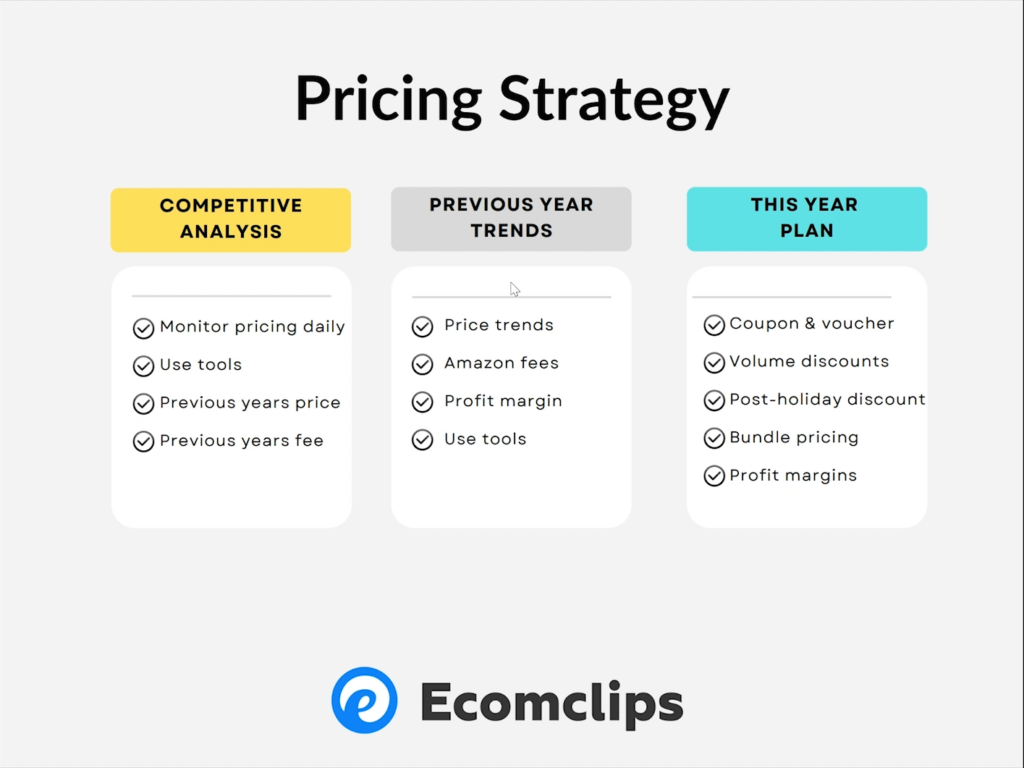
Additionally, managing inventory effectively and focusing on winning the Buy Box through competitive pricing and strong seller performance are essential for maximizing sales during this peak season. During Q4, pricing becomes even more crucial due to increased competition and heightened consumer demand.
How to Price for Q4:
- Competitive Pricing: Research competitors’ prices and adjust yours accordingly. Offering competitive pricing can help you win the Buy Box, which is crucial for Q4 sales.
- Discounts and Promotions: Utilize limited-time offers, such as lightning deals or bundle pricing, to entice shoppers who are hunting for deals.
- Use Amazon’s Automated Pricing Tools: Amazon’s automated pricing tools can help you stay competitive by adjusting prices in real-time based on your competitors’ prices.
Your pricing strategy needs to be smart and adaptable during Q4, balancing competitiveness with profitability. Here’s how to approach pricing:
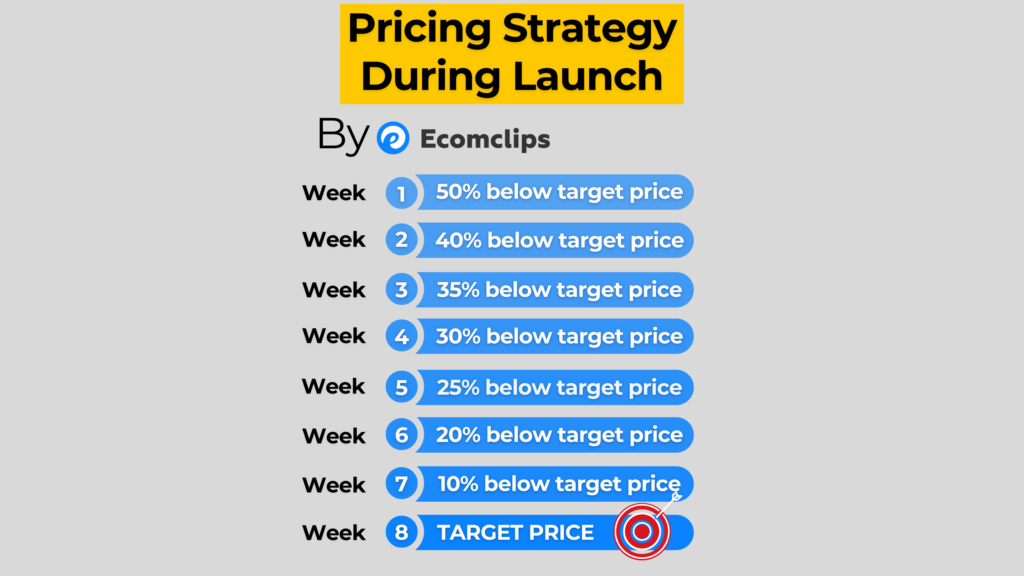
- Monitor Competitors: Keep a close eye on competitor pricing, especially during sales events like Black Friday. Tools like Keepa or CamelCamelCamel can help track price history and trends.
- Dynamic Pricing: Consider using dynamic repricing tools to automatically adjust your prices based on competitors and market demand.
- Discount Strategically: Offer discounts, but ensure they’re profitable. Flash sales and limited-time offers can create urgency and drive conversions.
- Coupons and Deals: Leverage Amazon’s built-in coupons and lightning deals to attract buyers, especially during holiday events.
h. Customer Reviews and Social Proof
In Q4, customer reviews and social proof play an even larger role in conversions. Positive reviews can make or break a sale, especially in the competitive holiday market.
How to Encourage Reviews:
- Follow-Up Emails: Send personalized follow-up emails thanking customers for their purchase and kindly requesting a review.
- Incentivize Feedback: Offer a small incentive (like a future discount) for leaving a review, but avoid directly offering reviews in exchange for rewards, as this violates Amazon’s guidelines.
- Highlight Positive Reviews: Feature positive reviews in your Enhanced Brand Content (EBC) or A+ Content, which can build trust with potential buyers.
By focusing on these strategies—keyword research, optimized titles and bullet points, high-quality images, A+ Content, and video optimization—you’ll be well on your way to creating compelling product listings that convert shoppers into buyers. These elements will help your listings stand out in Q4, ultimately driving higher traffic and sales.
5. Advertising Strategy: Supercharge Your Amazon PPC in Q4
As Q4 approaches, competition among Amazon sellers heats up, making it essential to have a robust Amazon PPC strategy. With major shopping events like Black Friday, Cyber Monday, and the holiday rush, your Amazon PPC campaigns need to be fine-tuned to maximize visibility, sales, and ROI. Here’s a comprehensive plan of action to supercharge your PPC efforts during the busiest time of the year.
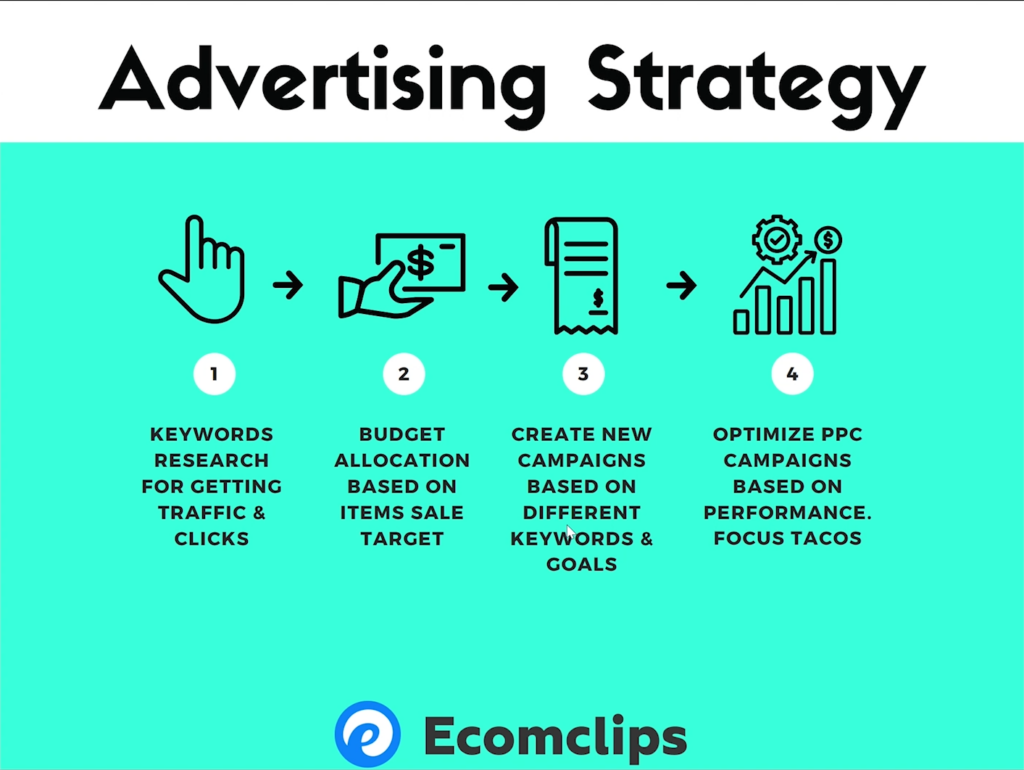
a. Increase Your PPC Budget
During Q4, traffic and competition skyrocket, so your budget should reflect this surge in demand. Without a sufficient budget, your campaigns may run out of money quickly, causing your listings to disappear from search results.
How to Manage Budget for Q4:
- Set a Realistic Budget: Evaluate last year’s performance and adjust your budget accordingly to account for higher traffic and competition.
- Monitor Cash Flow: Be prepared for daily budget adjustments. Use Amazon’s Budget Rule to automatically increase your budget when needed during high-traffic days.
- Prioritize High-Value Campaigns: Focus your budget on campaigns that offer the highest ROI, especially during Q4 events like Black Friday and Cyber Monday.
b. Bid Aggressively for Top Keywords
Bid higher on the most relevant and high-converting keywords to ensure your ads maintain visibility. The holiday season is when consumers are actively searching, so it’s the perfect time to capitalize on your best-performing keywords.
How to Optimize Keyword Bids for Q4:
- Identify High-Converting Keywords: Use Amazon’s Keyword Tool, Helium 10, or Jungle Scout to identify keywords with high conversion potential.
- Bid Aggressively on Prime Keywords: For top-performing keywords, increase your bids to outpace the competition. Focus especially on keywords that are holiday-related (e.g., “holiday gift,” “stocking stuffer,” or “Christmas sale”).
- Monitor Bids Daily: With increased competition, your bids may need to be adjusted daily. Track performance closely, especially on big days like Black Friday and Cyber Monday.
c. Leverage Sponsored Products
Sponsored Products are the most popular and effective ad type on Amazon. They can help you target specific keywords and product listings, driving direct traffic to your products.
Sponsored Products Strategy for Q4:
- Use Both Automatic and Manual Campaigns: Run automatic campaigns to capture broad search terms and discover new keywords. Complement this with manual campaigns targeting high-converting, relevant keywords.
- Optimize Ad Placement: Focus on the Top of Search (Sponsored Products) position, as this tends to generate the highest click-through rates (CTR).
- Target High-Intent Keywords: Ensure you’re targeting keywords that indicate a buyer’s intent, such as “best gift for [target audience]” or “Christmas sale on [product type].”
d. Optimize Sponsored Brands Ads
Sponsored Brands ads (formerly headline search ads) are powerful tools for building brand awareness and promoting multiple products during Q4.
How to Use Sponsored Brands Ads for Q4:
- Feature Your Best-Selling Products: During the busy holiday period, feature your top-performing and seasonal products in Sponsored Brands ads.
- Include a Strong Call-to-Action: Use action-driven language like “Shop Now” or “Limited Time Offer” to encourage shoppers to click on your ad.
- Promote Holiday Themes: Use holiday-themed creatives and keywords like “holiday sale,” “best Christmas gifts,” or “stocking stuffers” to resonate with Q4 shoppers.
- Include Custom Landing Pages: Create custom landing pages to showcase holiday deals and promotions, which can improve your ad’s conversion rate.
e. Run Video Ads
Video ads are becoming more popular on Amazon and can be an excellent way to increase engagement, especially during the highly competitive Q4 period.

Video Ads Strategy for Q4:
- Create Short, Engaging Videos: Short videos (15-30 seconds) that highlight your product’s key features and seasonal benefits are perfect for Q4. Use festive, holiday-themed visuals to capture attention.
- Focus on Conversion: Ensure your video highlights why your product is perfect for holiday shoppers. Feature testimonials, holiday use cases, and special offers.
- Target Highly Relevant Audiences: Use video ads to target shoppers searching for gift ideas or deals on products similar to yours. You can also target competitors’ audience using Product Targeting.
f. Use Product Targeting and Category Targeting
Product Targeting allows you to target specific competitor listings, while Category Targeting lets you display ads across similar product categories.
Product and Category Targeting Strategy:
- Target Competitor Listings: Target high-traffic competitor products that are relevant to yours, particularly during holiday sales events. If shoppers are looking at similar products, your product might be their next purchase.
- Target Specific Categories: Use Category Targeting to expand your reach within a product category and show up alongside other popular products in that space. This is particularly effective for seasonal and holiday-related products.
- Adjust Based on Performance: Keep an eye on the performance of these targeting types. If a certain competitor or category is performing better, allocate more of your budget towards it.
g. Optimize for Mobile and Voice Search
As mobile and voice search become increasingly popular, ensure your PPC ads are optimized for these platforms. In Q4, many users will be browsing and shopping on their phones, so it’s critical to make sure your ads perform well on mobile.
Mobile & Voice Search Optimization:
- Mobile-Friendly Ads: Ensure your product listings are mobile-optimized, with clear images, concise bullet points, and easy navigation to conversion.
- Voice Search Optimization: Include natural language keywords that people may use when conducting voice searches via devices like Alexa, Google Home, and smartphones.
- Fast Load Times: Ensure that the landing page your ad leads to loads quickly on mobile devices, as slow load times can hurt your ad’s performance.
h. Track and Adjust Campaigns Regularly
As Q4 is fast-paced and highly competitive, tracking performance and making real-time adjustments is essential for success.
How to Optimize Campaigns During Q4:
- Monitor Performance Daily: Use Amazon’s Campaign Manager and Advertising Reports to review your ad performance. Identify which campaigns, keywords, and targeting strategies are delivering the best ROI.
- Adjust Bids and Budgets: Increase budgets for high-performing campaigns and decrease bids or pause underperforming ones.
- Use A/B Testing: Run A/B tests on ad creatives, copy, and targeting options to find the best-performing combinations.
- Refine Keywords and Targeting: Regularly update keywords based on seasonal trends and competitor movements. Adjust targeting strategies to focus on the most profitable segments.
i. Consider Amazon DSP (Demand Side Platform)
If you have a higher budget, Amazon DSP allows you to programmatically buy display and video ads both on and off Amazon. Amazon DSP (Demand-Side Platform) is a programmatic advertising solution that allows brands to buy display, video, and audio ads both on Amazon and across other websites and apps in Amazon’s network. It works by using data and automation to target ads to specific audiences based on their shopping behaviors, demographics, and interests.
Advertisers can create campaigns that show ads on Amazon or off-site, reaching potential customers through banner ads, video ads, and more. The platform provides advanced targeting and cross-device capabilities, helping brands increase visibility, engage shoppers, and drive conversions.
Amazon DSP Strategy for Q4:
- Expand Reach: Use Amazon DSP to target users who have shown interest in products similar to yours, both on and off Amazon.
- Retargeting: Retarget shoppers who viewed your products but didn’t make a purchase. This is especially useful during Q4, as customers tend to research products before buying.
- Custom Audiences: Build custom audiences for more precise targeting based on their browsing and purchase history.
By following these PPC strategies, you’ll be able to maximize visibility and conversion during Q4. Increasing your budget, bidding strategically, running optimized campaigns (like Sponsored Products and Video Ads), and tracking performance regularly will give you the edge in this competitive season.
Wrapping It Up!
In this blog, we’ve explored the key strategies that Amazon sellers need to implement to maximize their success during the critical Q4 period. From preparing your Amazon account to ensuring it is healthy, stocking up in advance, and optimizing listings with relevant keywords and high-quality images, sellers can set themselves up for success. We’ve also highlighted the importance of leveraging key Q4 events like Black Friday, Cyber Monday, and the holiday rush to drive traffic and boost visibility.
An effective Amazon PPC strategy is crucial during Q4, and sellers will learn how to bid aggressively for top keywords, optimize Sponsored Products and Brands campaigns, and run video ads to engage customers. We also discussed the importance of adjusting budgets to meet the increased competition during this time and continuously tracking and refining campaigns for the best results.
Moreover, inventory management is highlighted as a top priority. Sellers need to forecast demand accurately to avoid stock outs, leverage FBA to meet fulfillment needs, and have backup plans in place to avoid the penalties of excess storage fees.
In conclusion, by following these strategies, Amazon sellers can boost their visibility, attract more buyers, and drive higher conversions during Q4 2024. With careful planning, smart advertising, and optimized inventory management, sellers will be well-equipped to stand out in a highly competitive marketplace and achieve significant sales growth during the holiday season.
At Ecomclips, we’ve been helping Amazon sellers grow their sales and capture market share through a combination of PPC and organic SEO strategies. If you’re looking to boost your Amazon sales or expand your brand’s presence, feel free to reach out to us at info@ecomclips.com.
We also offer free Amazon store and account audits for both PPC and SEO. If you’d like us to review your account and provide insights on how to improve performance, just contact us via email. We’re always ready to assist with personalized solutions, tailored to help you manage your PPC campaigns and enhance your profitability. For any other questions or support, don’t hesitate to drop a comment below. We’re here to help you succeed!
